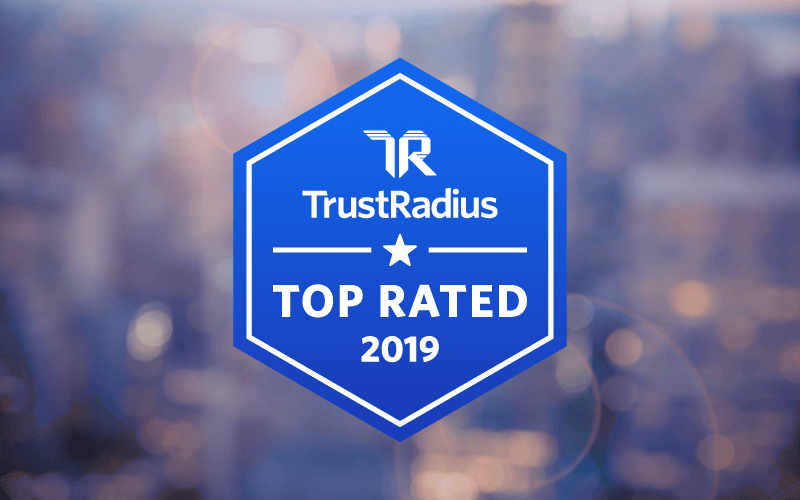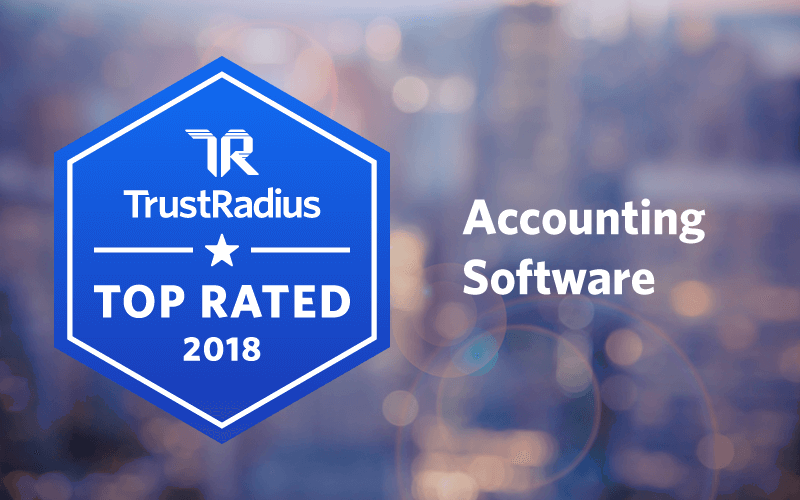B2B Connection
Information and resources for technology buyers
TrustRadius Top Rated Today, we awarded the 2019 TrustRadius Top Rated badges for Business Intelligence (BI) Tools. The TrustRadius Top Rated awards are the most trusted in the industry because they are an unbiased reflection of customer sentiment, based solely on user feedback and satisfaction scores. Top Rated awards are the voice of the market and are not influenced by analyst opinion, the vendor’s company size, popularity, or status as a TrustRadius customer. Business Intelligence (BI) Tools Finding the right BI tool that meets all your business’ needs best can be a difficult task. Software buyers on TrustRadius use reviews written by BI tool end-users and product comparisons to help them make better informed purchasing decisions. In the past quarter 39,900 professionals used TrustRadius to evaluate Business Intelligence (BI) tools—at least 9,600 of them were from enterprise companies with 1,000 or more employees. Visitors evaluating BI tools were most curious about comparing different products and reading product reviews —53% compared at least two products and 30% read reviews. Here are the winners: SiSense Sisense is a full-stack product with a columnar data store, an ETL layer and a set of front-end tools for constructing dashboards and visualizations. It has been […]
First things first: A Definition Streaming analytics is an emerging software space that has gained considerable prominence due to the increasing importance of big data, and specifically the Internet of Things (IoT). But what is it? Streaming analytics software makes it possible to analyze data in real time, as it happens, by plunging into the stream of live data and analyzing it in flux. This is profoundly different from analyzing data at rest. The entire business intelligence space has been working on the data at rest analysis problem for decades and the possible approaches are well understood. But the techniques for analyzing data in motion are relatively new. Essentially, the software constantly calculates statistical analytics while moving with the stream of data. The value of this real-time data is transient, and insights must be acted on almost immediately to gain real value. Some Examples of How these Products are Used Streaming analytics technology was first adopted by the finance and capital markets industry. In capital markets, real-time data is a crucial tool to understand what is happening right now and take appropriate action. For example, a streaming analytics model might watch market data streams with instructions to take specific action […]
The complexity of traditional Business Process Management (BPM) platforms has often meant that deployment fails to deliver the value originally anticipated – at least in the short term. In addition to complexity, there are very real obstacles to overcome. This is particularly true in terms of helping employees to see process automation as a way to remove time-consuming manual processes. The danger is that employees may find it difficult to abandon a broken process just because “that is the way it has always been done”. For these reasons, it is essential to build some early quick wins to build confidence and get buy-in. The following list of best practices has been found to greatly increase the likelihood of success of BPM projects. The key is to start small rather than trying to do too much too soon. 1. Plan Baby Steps While the ultimate goal is to have everyone in the organization adopt the BPM tool, you need to start off small. It could be a particular function in your organization. It could even be targeted at a specific workflow inside your department. For example, if you are targeting the human resource function, it is smarter to start with the recruitment […]
With the advent of platforms like Upwork, Elance, and Freelancer.com, the freelance economy has absolutely exploded. According to a 2017 study on Freelancing in America conducted by Edelman Intelligence, there are over 57 million freelancers working in the United States alone. That’s over 35% of the workforce! What’s perhaps even more telling, is that a strong majority of freelancers (63% to be exact) feel more financially secure with diversified income as opposed to just one employer. Freelancers in the study average 4.5 clients per month. Freelancers are also now investing in skill development on a regular basis. The study found 55% of freelancers reskilled within the last 6 months! That’s almost double the 30% of others who reskilled within the same time frame. So what does this revolution mean for small businesses? Expert human resources, that were formerly only available to small businesses as full-time hires, can now be afforded on an as-needed basis. It’s not dissimilar to the flexibility the SaaS model has provided to smaller businesses over the past decade. After all, the SaaS boom opened the door for budget-strapped organizations to leverage tools formerly reserved for enterprises and pay to use them monthly on a subscription basis, […]
It’s every independent contractor’s least-favorite time of the year: tax season. No one likes doing their taxes, but when yours involve complicated deductions or payments from a variety of sources, your annual filing becomes a complicated labyrinth of assets, deductions and expenses. Luckily, the same digital tools that make it possible to run your business remotely also allow you to track your expenses and invoices with ease. In particular, there is a variety of accounting tools and professional tax software that can help you wade through last year’s expenses and deposits and identify deductions you might have otherwise missed. Below, we’ll introduce you to the bookkeeping, invoicing and professional tax software TrustRadius users love—and offer a few tips for making it through the 2018 tax season unscathed. The Accounting Software You Need to Survive The right piece of accounting software takes the headache out of small business administration. Many of these tools have invoicing features, allowing you to easily create professional-looking documents without formatting problems and other issues. Most will link directly to your bank account to track your earnings and outstanding invoices, while also allowing you to easily categorize expenses and spending. Some applications even give you the ability […]
We understand that lean and nimble small business owners invest their heart, soul, and most important of all, their time into delivering the best overall experience for their customers. Of course, small businesses have needs too, with time tracking, bookkeeping and cash flow management often near the top of that list. There are an overwhelming amount of tools and apps out there for business owners that assist with financial management, invoicing, and overall bookkeeping organization. That’s why TrustRadius provides reviews that compare and contrast the leading providers of small business accounting and invoice services, so you can spend less time shopping around. Below we’ve listed, in alphabetical order, some of the leading small business finance products that are also loved by Fundbox users. What is Fundbox exactly? It’s a financial resource that simplifies how small businesses can gain access to credit. Fundbox seamlessly connects with the products mentioned below to examine your business performance and determine how much credit you may qualify for. Once approved, you’re ready to put the funds to action and use it for any project your business needs: hiring, marketing, new inventory, etc. Today, thousands of small business owners are taking advantage of these tools to […]
Today, we awarded the 2018 TrustRadius Top Rated badges for Accounting, Tax and Budgeting Software. The TrustRadius Top Rated awards are unique in that they are an unbiased reflection of customer sentiment, based solely on user satisfaction scores. They are not influenced by analyst opinion, the vendor’s company size, popularity, site traffic, or status as a TrustRadius customer. Financial accounting and budgeting is a methodology for recording and classifying a firm’s financial transactions, including reporting and analysis of these transactions. Accounting transactions are encompassed by the general ledger, which is a complete record of financial transactions over the life of a company. Accounting software automates transactional record-keeping processes so that transactions can be completed and tracked more efficiently and accurately. Accounting software is primarily back-office software concerned with record maintenance and regulatory compliance. This category of software has been slower to move to the cloud than many other software categories, but SaaS is now becoming the dominant delivery model. Integration, particularly with banks and clearing houses, is increasingly important in eliminating the need for manual data entry. The following products represent a range of very different product types. Some like QuickBooks Pro are on-premise products, while others like Xero are […]
Business Intelligence is Just One Flavor of Analytics Business Intelligence (BI) is a critical tool for understanding what is happening in a business, even if recently it has been somewhat eclipsed by emerging technologies that extend the promise of BI-type analytics far beyond its roots in business reporting and dashboards. Both BI and more recent technologies like data science platforms are predicated on gaining business insight based on data analysis. The primary function of BI tools is to explore past trends in a business’s historical data and compare data across time, or evaluate the impact of certain events on the bottom line. Machine learning and data science tools, on the other hand, use algorithms to understand and predict a business’s future performance. The kind of analytics provided by BI tools is often referred to as “descriptive analytics”, meaning that they describe in some detail what has already happened. But this is just one flavor of analytics. BI today is best considered as one component of a continuum of analytics capabilities which are different, but complementary to each other. From Descriptive to Prescriptive There are several other types of analytics in addition to descriptive analytics. For example, diagnostic analytics tries to […]
TrustRadius has just published the 2016 Buyer’s Guide to Business Intelligence Software, based on 2,250+ end-user ratings and reviews across 22 BI software products. This is an update to the original guide published in 2014, and is a significant revision containing brand new TrustMapsTM that compare products in the category based on end-user satisfaction ratings and research frequency by prospective buyers on TrustRadius. The guide also contains individual profiles for each of the main vendors and products in the category, advice on how to buy a BI solution, and a discussion of recent trends in the BI market, identifying several trends that have either occurred, or gained in strength, since the first version was published. The grand theme is a change in focus to the needs of business users, and away from IT . Major trends identified are: The shift away from centrally governed, IT-led tools to agile, self-service BI. Most of the full-stack tools like SAP, IBM, SAS and Microsoft have now released data discovery and visualization tools designed for business users/analysts that are not dependent on IT. Data discovery and Visualization vendors building more enterprise-level features. The data discovery and visualization vendors are being pressed to provide more enterprise […]
Regarding the state of Sales in 2016, Scott Albro offers this provocative piece of advice: “Companies that figure out how to adopt sales technology and mitigate risk grow a hell of a lot faster than those that don’t.” Albro’s claim—part observation, part promotion—is based on research done by TOPO, a sales process and technology consulting firm where Albro is the CEO. To some extent, this advice is self-serving, since TOPO’s business model involves advising companies about growth strategies that involve technology. However, based on TrustRadius’s independent study of sales tech buyers and users, as well as surveys done by other sales tech experts like Nancy Nardin, many companies are planning to adopt new sales technology this year, whether for the first time or to replace/fill in older ecosystems. If you’re heading into product evaluations this year, there are a few things you can learn from early adopters. While I was at TOPO’s recent Sales Summit, I talked to practitioners at leading tech companies to find out: Which pieces of the Sales tech stack they’re focused on How sales tech relates to organizational growth initiatives Lessons learned around managing user adoption Goals for future use of sales technology Organizing for Growth: Sales […]
TrustRadius Research aims to help buyers navigate the sales technology landscape with a new report, featuring expert and user advice on how to build your sales stack in 2016. The report is timely, because of changes underway in the market right now. Vendors are rapidly releasing new and overlapping product functionality, renaming software categories, and attaching themselves to trends and buzzwords in the Sales/Marketing space. At the same time, many businesses are looking to scale their Sales operations by creating specialized high-velocity teams, while automating and optimizing key pieces of the sales process. These initiatives can be supported by technology, so many Sales leaders are looking to invest in new software for their sales teams this year. Scott Brinker, Editor of Chiefmartec.com, commented, “Sales technology has lagged a bit behind MarTech in terms of development and adoption but it is quickly catching up, and 2016 may very well be the Year of the Sales Stack.” The visual below combines different ways to look at sales tech products-by user role, function/stage of the sales process, and vendor offerings–which are not usually presented together. This comprehensive view, excerpted from the TrustRadius Research study, allows buyers to get a better sense of which products do what for who, and which vendors offer solutions […]
Be sure to check out our new Buyer Blog for the latest B2B blog articles & discussions! We talked to Kevin Marasco, CMO, about how HireVue’s video engagement platform helps recruiters and coaches. Marasco explained that a combination of video interviews and predictive analytics powers performance scoring, based on personality and language attributes. According to Marasco, this allows managers to make data-driven decisions about hiring and coaching. Introduction to HireVue Give us a brief overview of HireVue. HireVue’s the team acceleration company. We use digital video and predictive analytics to build and coach the world’s best teams. Our purpose is to give people a voice. We believe people represent unique stories, experiences and potential that doesn’t always come through on your typical resume or profile. So we offer individuals the ability to share their stories through digital video, where they can show the attributes that really matter – things like attitude, ambition and potential. This levels the playing field for candidates so that they can find and do more meaningful work. Busy candidates and team leaders can stay focused on their customers and day jobs, and respond at their own convenience, on demand. We are also leveraging predictive analytics. We are analyzing […]
11/12/2015 We talked to Lara Shackelford, CMO at The TAS Group, about the Dealmaker platform and The TAS Group’s new product release: Dealmaker Sales Performance Manager. Dealmaker helps sales reps and sales managers better visualize their pipeline, assess sales velocity, and understand risk and trends. Because The TAS Group focuses on strategic sales pipeline management, account targeted selling best practices are built into the software in the form of guided insights and coaching. Dealmaker is built natively on the Salesforce1 platform, which Shackelford explained maximizes accessibility, usability, and security. This is also a differentiator within the marketplace, since pipeline analytics competitors aren’t native to Salesforce. Introduction to The TAS Group Give us a brief introduction to The TAS Group. The TAS Group is focused on helping sales professionals and sales managers get the best sales performance and guidance every day through our built-in sales expertise. We do that in real-time, built natively on the Salesforce1 platform. We help sales professionals crush their quarter with insights and total visibility into their pipeline and performance—no analytics needed. Companies don’t need to hire a business analyst or a data analyst to try and figure out what’s happening with your sales pipeline. We help them […]
FinancialForce.com is a cloud applications company built on the Salesforce.com platform. Their apps include accounting and billing, PSA, ERP, HCM, inventory management, and SRP. At the Dreamforce conference, TrustRadius talked with Tom Brennan, SVP of Marketing, about the relationship between accounting and customer success management, the company’s recent funding, and the R&D advantage of working with the Salesforce platform, which Brennan sees as “winning the platform race.” How did FinancialForce.com get started, and where is the company now? The company started in 2009, with an investment from Salesforce and Unit4. Initially, the idea was to break down barriers between what Salesforce does, in the front office, with everything that goes on in the back office like accounting. FinancialForce.com’s main value is that front and back office apps are now on the same platform. For users that means one login, one set of workflow tools, and one set of reporting tools. From a data point of view, there’s only one customer record, so the information they put in Salesforce is the same they bill, invoice, and collect cash against as well. Companies have only one set of data to use for reporting; it greatly simplifies the business as a result. We started in the accounting space and then added professional […]
Lattice Engines’ CEO describes how predictive analytics can transform marketing and sales processes and unclog the B2B funnel. Over the past few years, Lattice Engines worked to achieve a surprisingly fast deployment rate, which continues to be a win-win for customers and company growth. Can you give us some background on Lattice Engines? What’s your vision? We are pioneers in the predictive marketing and sales space. We were the first company that ever started talking about predictive marketing and sales for B2B. We start with the premise that if you can predict who is going to buy, what they’re going to buy, when they’re going to buy, and how much they’re going to buy better than the average person, then you can use that to improve everything about the sales and marketing function. So for example, if you have perfect information about what a particular person is going to buy on a particular day, you don’t have to spend your marketing dollars and sales dollars on anybody else, you would just go to them and talk them. Obviously, you can’t have perfect information but what you can have is very high-quality probabilistic information—this person is 80% likely to buy, versus […]
TrustRadius recently published a Buyer’s Guide to Accounting Software in which we noted the increasing dominance of cloud software in that sector. In the guide, we said that accounting software users have been slower to switch to cloud solutions than those in other software categories, potentially because of concerns about security and change management. Indeed, many on-premise accounting products, such as QuickBooks Desktop and Sage 50 (formerly Peachtree) are widely adopted. However, a number of cloud products have emerged, both for small businesses (such as Xero and Wave), as well as for mid-market companies (such as NetSuite and Intacct). Additionally, vendors of on-premise software have released cloud products, including QuickBooks Online and Sage One. Given that this sector has been slower to switch to the cloud, how slow is slow? Are there other reasons for this slowness, besides security concerns? How much growth can we expect among cloud vendors in the coming year? To find out, we asked TrustRadius members with expertise in the accounting sphere, whether they were primarily using a cloud or on-premise accounting product. We then asked the on-premise users if they had plans to switch to a cloud solution. Among the 350 respondents, 52% are primarily using a cloud […]
Earlier today we announced the release of our TrustMaps™ for Accounting software, which rank products based on user satisfaction ratings and research frequency among small businesses, mid-size companies and enterprises. The TrustMaps™ help software buyers quickly locate the solutions most highly rated and commonly considered by companies of a similar size, and therefore most closely aligned to their needs. Each TrustMap™ depicts Accounting software products on two dimensions – “likelihood to recommend” ratings by users and research frequency by prospective buyers on TrustRadius, as measured by unique page views. All ratings come from authenticated users of Accounting software products who reviewed or rated the product on TrustRadius.com. The guide also includes an overview of Accounting software trends as well as key factors to consider when selecting an Accounting solution. “This is a market in transition with emerging new vendors, and a shift in delivery model. On-premise product vendors still dominate the market, but cloud vendors are starting to make real inroads across all segments”, said Vinay Bhagat, CEO of TrustRadius. “Our Accounting Software TrustMaps™ provide Accounting professionals with a pragmatic approach to identify the best-fit solutions based on market segment, user satisfaction and research frequency on TrustRadius.” Best Accounting Software for Small Businesses (<50 employees) Based on […]
Q. What distinguishes an organization that is successful with business intelligence (BI)? A. Successful BI implementations are not just about tools, but are about people and processes. Focusing too soon on tool selection is not going to provide the best result. A BI project is not a one-shot thing, but is a journey that takes time and patience. Data is extremely valuable, but hard to manage. Companies that want to reap the value of data need to treat it as a critical asset and resource and adopt a systematic, rigorous approach to managing it. To succeed, BI projects need a strong leader who is knowledgeable about both technology and business and can straddle both worlds, translating between the two. Since the ultimate goal is to achieve significant business value, it’s usually better to have a technically-oriented business person lead the team. Q. What steps should an organization take to establish a BI program or strategy? A. The first step is to outline the expected business outcome and to make sure that there is buy-in around the ultimate goal. This is much more important than technology, which is a secondary matter at this early stage. The second step is to focus on the data. […]
Be sure to check out our new Buyer Blog for the latest B2B blog articles & discussions! TR: What distinguishes an organization that is successful with business intelligence (BI)? BD: The important thing to remember is that it’s usually not about tools, and is more likely to be about organizational maturity and the ability to get decisions made and get things done. Many organizations I encounter are somewhat internally dysfunctional and this ability to get things done is weak or even non-existent. TR: What steps should an organization take to establish a BI program or strategy? BD: I prefer to work on larger enterprise-wide programs where organizations are looking at bringing coherence to their data across departments and divisions. These large cross-functional efforts are best thought of as a process containing multiple projects. The leader of such a major process change needs the ability to understand multiple stakeholders with various different needs and different timeframes. Managing through what I called a “staged implementation roadmap” is essential. In order to do that successfully you need strong program management skills. It’s important to be politically aware and understand things like the consequences of deciding to work with one department or division before another. TR: Who drives – IT or business? […]
We’ve recently asked BI users about their Business Intelligence software usage and spend in our 2015 Business Intelligence Survey. The results indicate that BI continues to be a strategic area of focus and investment for companies of all sizes. While intent to invest is highest amongst small and mid-size companies, large companies will invest more in areas like Cloud BI, Data Discovery and Visualization, and Big Data. Most companies will continue to use multiple tools in tandem with each other rather than look to a one-size-fits-all solution; if anything the number of distinct BI tools used is likely to increase. In our Buyer’s Guide to Business Intelligence Software, we talk more about this renewed interested in the BI software space, particularly in the areas of cloud, big data, and data visualization. Here are the key findings from our 2015 Business Intelligence Survey: 1. Many companies are using multiple Business Intelligence solutions Large companies, not surprisingly, use the most BI software products, using an average of 2.5 distinct tools per company (fig. 1), with 55 percent using two or more tools, and 29 percent using four or more (fig. 2). More surprisingly, 34 percent of small companies (those with less than 100 employees) use […]





















